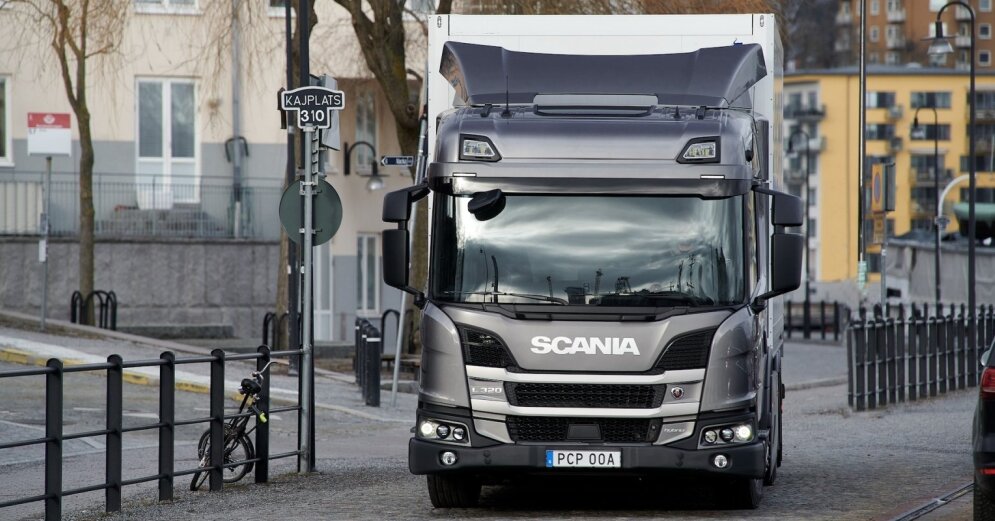“Scania“has launched hybrid electric (HEV) and rechargeable hybrid electric (PHEV) trucks, which can be equipped with a variety of powertrains and charging options, thus offering solutions to meet the requirements of different industries and vehicle types, such as refrigeration transport, concrete mixers and regional supplies of goods.
–
–
Content will continue after the ad
Advertising
–
Hybridization means up to 40% fuel savings in cities compared to conventional drives. It delivers the benefits of quiet, low-emission, urban and regional deliveries while maintaining the inherent flexibility and reach of an internal combustion engine truck. This means that this may be the most viable way to start electrifying the fleet today.
The all-new GE281 electric system works in tandem with Scania’s seven- or nine-liter internal combustion engine, enabling fossil-free transport solutions for heavy-duty trucks.
Scania’s new hybrid powertrain is self-designed. By combining the two electric motors and combining them with important parts from Scania’s latest generation of Opticruise transmissions, the GE281 has been created – a gearbox electric system with a smooth power supply and a capacity of up to 36 tonnes without an internal combustion engine.
It also works in the opposite direction. As the electrical system always helps the internal combustion engine to start and accelerate, the internal combustion engine can be reduced in both volume and power.
Various applications
Scania’s latest generation hybrid trucks can be ordered as HEV and PHEV, with P, G and L series cabs. Trucks are available both with a fixed frame and as tractors.
The seven-liter internal combustion engine, like the nine-liter engine, is available in four power versions. All Scania Euro-6 engines can run on hydrogenated vegetable oil (HVO), but some can also run on biodiesel (FAME). PHEV provides up to 60 km of electrical reach and uses both recuperation and external charging.
It reaches 80% charge in just 35 minutes, which means that a significant part of the city’s supply route can be carried out in full electric mode, charging the car during loading and unloading.
The Scania GE281 offers 230 kW of continuous power and 290 kW of maximum power, with a maximum torque of 2100 Nm. It has six forward gears, but no traditional clutch, as this process is carried out by a planetary gearbox, ensuring gear changes without torque interruptions. This solution also ensures smooth driving at low speeds, but the power take-off (PTO) can be switched on while driving in both electric and internal combustion mode.
A pioneer in the whole segment
Scania is one of the few large original equipment manufacturers committed to offering commercial hybrid trucks. In fact, Scania was a pioneer in this segment back in 2014, with the launch of the first generation with an electric range of up to two kilometers.
Scania’s new generation of HEV / PHEV offers a new level of handling. The series is not only powerful, but also available with all the additional features required by customers. A power take-off (PTO) is offered, which can be used even in fully electric-transmission mode.
It offers a start / stop function that prevents unnecessary idling. Support systems such as Scania Adaptive Cruise Control with Active Forecasting are also provided. Different driving modes are also available. When the “Power” mode is selected, an additional 100 horsepower (74 kW) is added to the maximum performance of the internal combustion engine.
The installed capacity of the PHEV is 90 kWh (3×30 kWh batteries), while the HEV version has one 30 kWh battery. A hybrid truck with a smaller engine – from nine to seven liters – will have a payload of 250 kilograms more than its internal combustion engine counterparts. The hybrid system only increases the net weight of the car by 750 kg, but the European Union allows one extra tonne for electric vehicles.
Maintain relevance and competitiveness
Major European cities such as Paris and Amsterdam are introducing areas with high emissions, noise and safety requirements. According to the Green Course guidelines, this type of regulation will be introduced in all Baltic countries in the future. This means that advanced carriers who want to stay compliant and competitive are turning to the fossil-free and electric solutions available here and now.
To meet increasingly stringent emissions and noise requirements, meet customer demand for fossil fuel-free transportation, strengthen brand responsibility and build business sustainability, and actively participate in collective global efforts to achieve climate goals, all through fleet electrification.
–

